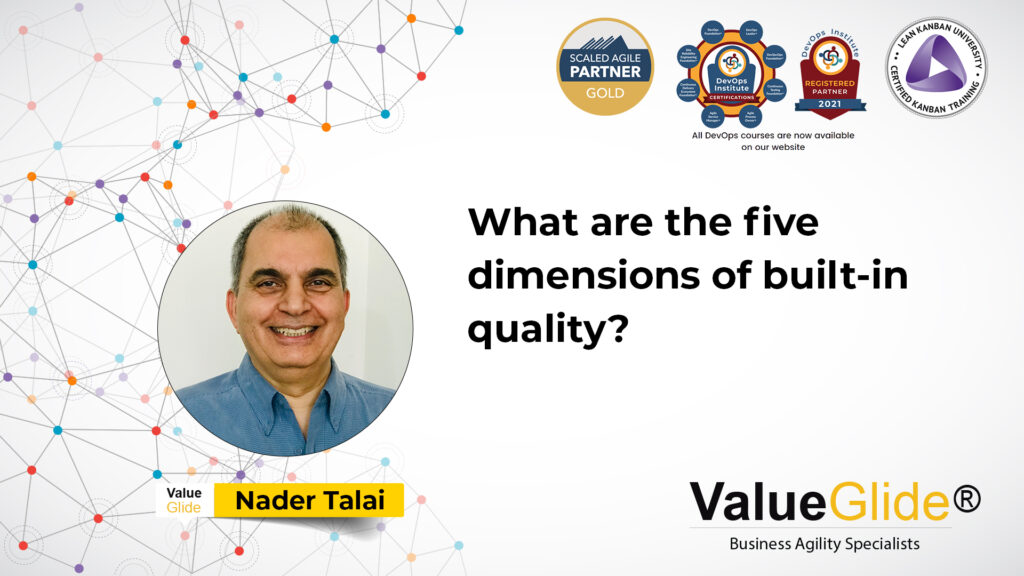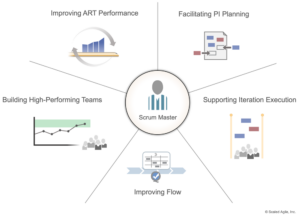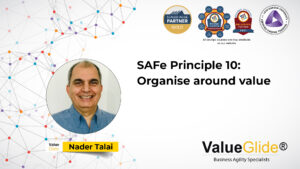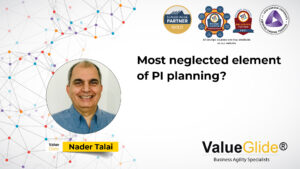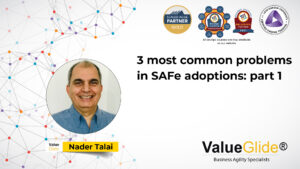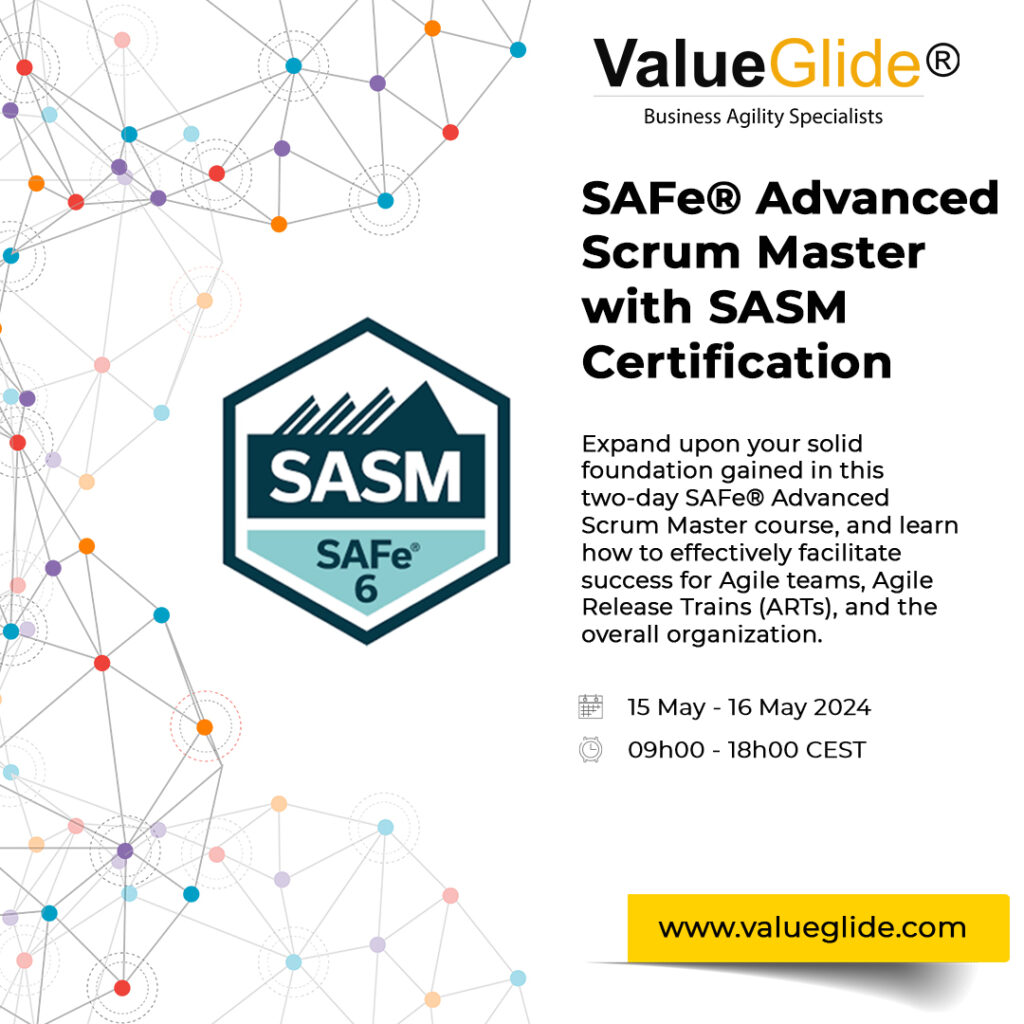What are the five (5) dimensions of built-in quality?
In the world of SAFe (Scaled Agile Framework), there are officially five dimensions of built-in quality. They are known as:
- Flow
- Architecture and design quality
- Code quality
- System quality
- Release quality
In this short video, we will explore broader dimensions of built-in quality and explain why having a strong focus on built-in quality is critical in agile and product development.
Why does quality matter?
In traditional project management and manufacturing, people inspected for quality after the work was produced or delivered, which isn’t a great way to build anything of value.
As Deming said, ‘’you can’t inspect quality into a product, you need to build it into the product.”
So, if you are only inspecting for quality after the work is done, you have already wasted a great deal of time, effort, and money. It needs to be a built-in component of the product or features you build, and you need to make quality a priority, from the onset, to ensure that you are always building the most valuable product/feature, in the most valuable way, at the most valuable time.
Once we have identified why quality is such an important element of what we do, we can invest our time identifying where quality needs to be a priority and why.
Quality of human interaction
Agile values and principles, as articulated in the Agile Manifesto, place a great deal of importance on people and interactions over processes and tools.
So, we start by acknowledging that we need quality interactions between people. People within the team, within the organization, and outside of the organization. End-to-end quality interactions.
This could also include things like embracing diversity.
Quality of value flow to our customers
- Are we truly customer-centric?
- Do we think in terms of outside-in rather than inside-out?
- Are we thinking of how to truly delight customers?
- Do we ensure the customer experience is valuable.
- Have we identified customer pain points and are we actively working on solving them?
- Have we identified points in the value stream that block the flow of value to customers?
- Are we testing and learning quickly enough to ensure consistent value delivery?
- Did we deliver value within the time frame(s) we committed to?
And so forth.
Yes, we need to create and capture value for the organization but if we aren’t satisfying customers and consistently creating value for them, we don’t have a viable business and we aren’t going to be able to grow or retain customers in the future.
Customer value delivery is an important element of built-in quality for organizations.
Quality of the product, feature, or service.
Quality is always perceived through the eyes of the consumer or customer.
We can pat ourselves on the back as much as we like but if the user experience doesn’t meet their needs or expectations, it doesn’t matter.
- Did we identify and solve the right problem?
- Did we identify the greatest need, and did we deliver against expectations?
- Did we produce the most valuable outcome for the customer?
- Does the product, feature, or service measure up against our own quality standards?
- Is the product valuable, in the context of a customer need or requirement?
- Is the customer able to get the job done because of our product or feature?
- Is this the most valuable thing we could have built, given what we knew at the time?
And so forth.
There are few things that delight customers as much as a great product, feature, or service that checks all the boxes that matter to them. A high-quality product commands greater customer loyalty and results in greater customer satisfaction, so it’s worth getting it right.
Quality of processes and tools
There are several processes, tools, and practices that have proven to be valuable in product development and software engineering over the years. Things like:
- Pair programming
- Extreme programming
- Continuous integration
- Integrated testing
- Respected engineering practices
And so forth.
Are we working according to high-quality standards, incorporating high-quality tools, and using valuable practices to ensure that we don’t accumulate technical debt?
Are we focused on using proven tools and methodologies to get the ball rolling, and then through a process of experimentation and reflection, identifying the most valuable style of working that suits our unique context and application?
Do we have a system that nurtures continuous learning and improvement? Do we have structures and measurement procedures to help inform how we can improve next?
Investing in the right tools, processes, and systems helps ensure that our quality standards improve with each iteration and empower the team to deliver built-in quality as standard throughout the production or manufacturing process.
Architecture, design, and code quality.
The SAFe framework provides a great scaffolding for ensuring that the system has integrity and that our code quality is good, or good enough for what we need it to do.
As we move through each iteration and learn, we can improve our code quality and the design of the systems and infrastructure. We can validate the quality of the architecture and identify opportunities for improvement.
As with agile, we are focused on continuous discovery, experimentation, and improvement.
At the start of product discovery and development, we are designing the best architecture and system that we can, given what we know and the limited information we have about the environment.
As we progress, and receive feedback from customers and product stakeholders, we identify areas that can improve and adapt what we are doing to accommodate those improvements.
The system or architecture was good enough for what we wanted to achieve, but we are now focused on improving in alignment with feedback, data, and evidence.
We are identifying impediments and unnecessary delays in the system and working to improve the quality of the value stream, the agile release train experience, and the customer experience.
So, these would be valuable elements of built-in quality and something that a great SAFe coach or consultant would help the team of teams integrate into the work they are doing.
About Value Glide
Value Glide are a SAFe (Scaled Agile Framework) consultancy, coaching practice, and training specialist who work with organizations to align business objectives with customer needs and wants.
As deeply experienced agile coaches and practitioners, our team are invested in continuous learning through each client engagement and use the data and evidence we gather from each implementation to inform our training, coaching, and consulting services.
In a nutshell, empirical process control or empiricism.
If you are thinking of adopting agile within your organization and have identified SAFe as a great agile framework to adopt, implement and improve your business agility, visit our SAFe Quickstart ART Launch program page or view our SAFe Consulting Services page.
If you have identified a need for an agile coach and SAFe coach to help your organization adopt and implement SAFe, visit our SAFe Coaching Services page.
If you want to know more about SAFe and how to lead SAFe, visit our SAFE Training page for a host of options, from Leading SAFe to a SAFe Release Train Engineer course.
#SAFe #scaledagileframework #scalingagile #agile #agileframework #agilecoach

